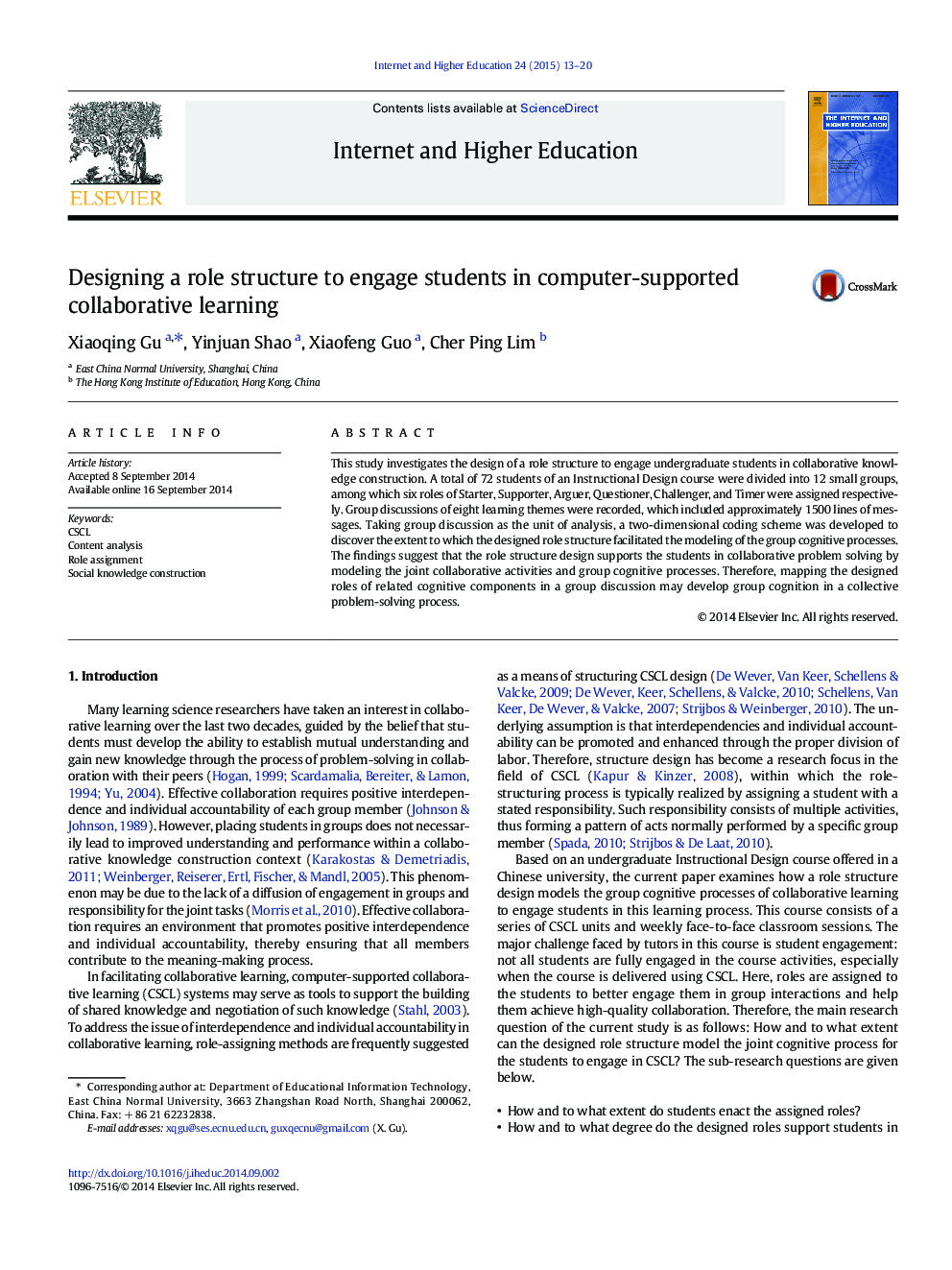| Article ID | Journal | Published Year | Pages | File Type |
|---|---|---|---|---|
| 357734 | The Internet and Higher Education | 2015 | 8 Pages |
•Roles are structured and assigned with the specific aim of modeling the group cognitive process so as to scaffold students group meaning making.•The designed role structure was tested in an undergraduate class, with the main data of group discussion, which was recorded with ICT tools.•A two-dimensional data coding scheme was developed by taking group as the unit of analysis ( Strijbos & Stahl, 2007), where dimensions of ‘function’ and ‘cognition’ were separately used.•Findings of " How do and to what extent do the students enact the assigned roles?"•Findings of "How do and to what degree do the designed roles support students in group cognitive process?"•Findings of "How do and to what degree do the designed roles model the group cognitive process to engage students in collaborative problem solving?"
This study investigates the design of a role structure to engage undergraduate students in collaborative knowledge construction. A total of 72 students of an Instructional Design course were divided into 12 small groups, among which six roles of Starter, Supporter, Arguer, Questioner, Challenger, and Timer were assigned respectively. Group discussions of eight learning themes were recorded, which included approximately 1500 lines of messages. Taking group discussion as the unit of analysis, a two-dimensional coding scheme was developed to discover the extent to which the designed role structure facilitated the modeling of the group cognitive processes. The findings suggest that the role structure design supports the students in collaborative problem solving by modeling the joint collaborative activities and group cognitive processes. Therefore, mapping the designed roles of related cognitive components in a group discussion may develop group cognition in a collective problem-solving process.
